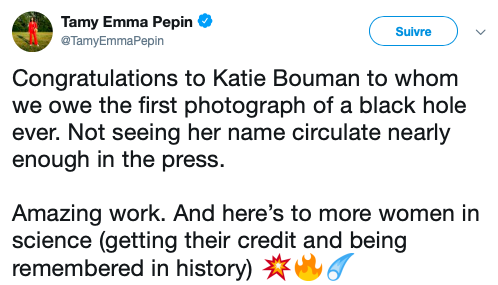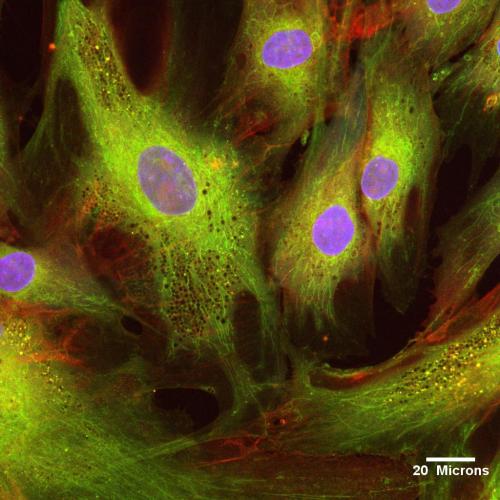“our Work Should Equip The Next Generation Of Women To Outdo Us In Every Field This Is The Legacy We’ll





“our work should equip the next generation of women to outdo us in every field this is the legacy we’ll leave.”
- rupi kaur
More Posts from Thejoyofscience and Others


This is Phthirus pubis, a human louse, commonly known as “crabs" — it is known to infect pubic hair but can infect the EYELASHES.
I came across this while making a high yield vector borne disease lecture for an upcoming talk. On the clinical pathology boards, they apparently really like to show “gross" gross photographs of bugs and ask what is it or what disease does it cause. I have a fascination with tick born disease, so it felt natural to expand and learn some more entomology. My attending was looking through my lecture and said I needed to add an example of a louse and a flea, since people commonly mix them up. Well, I naturally started to google… and ended up grossing myself AND my attending out.
A job well done. Another excellent day on clinical microbiology.
PS - up until a year ago, I thought that “crabs" were actually miniature crabs. What? I wasn’t that far off! Both are apart of the phylum arthropoda!

Steering Stem Cells with Magnets
Magnets could be a tool for directing stem cells’ healing powers to treat conditions such as heart disease or vascular disease.
By feeding stem cells tiny particles made of iron oxide, scientists at Emory and Georgia Tech can use magnets to attract the cells to a particular location in the body after intravenous injection.
The results are published online in the journal Small and will appear in an upcoming issue.
Human Adipose Derived Mesenchymal Stem Cells
More…

drowning in that lovin gendrya and braime juice







Amazing Annual Monarch Butterfly Migrations
Monarch butterflies in other countries also migrate with the season, but it’s those in North America that travel the greatest distance. Each year, there are two major Monarch Butterfly migrations in North America. Those monarchs that live east of the Rocky Mountains fly down to Mexico, while the more western population stops in California. Monarchs do not like the cold, and as soon as things start to get a little chilly up north, they take off south (and west) for warmer climates.
The largest group travels over 1,250 miles from the Rocky Mountains to spend the winter in Michoacán, Mexico. The government of Mexico has managed to almost stamp out logging in the monarch’s wintering areas, a practice which once threatened the migrating insects. Working with environmental organizations and individuals, they have been encouraging communities to start eco-tourism enterprises by planting trees for the butterflies to nest. The monarch is a butterfly ruled by the sun. When the autumn sun reaches fifty two degrees above the horizon, the monarch reproduction cycle shuts down, and their great migration begins. When they begin their flight down to Mexico, they have never been there, yet every generation is able to find the exact same spot year after year where their previous ancestors spent the winter.
The second group travels from Ontario, Canado to spend their winters in Santa Cruz, California. You may wonder why the monarchs don’t simply stay and enjoy the warmer weather there year round. That’s because they need the milkweed plants on which their larvae feed, and those are more plentiful up north. So as soon as the weather starts to warm up, that’s where they return every year. Interestingly, not every generation of monarchs migrate. Some simply remain in their breeding ground. Those that do migrate are born at the end of summer or early autumn. Because of their trip to warmer climes, this special generation will outlive several younger generations that stay put. It will then be the migratory monarchs’ great grandchildren that follow the beat of their forebears’ wings.
in Ontario, Canada, in their summer home. It’s thought that the distinctive bright coloring of the monarchs acts as a warning to predators to stay away. Monarch butterflies are also poisonous and will make any animal that tries to eat them sick – hopefully sick enough not to try snacking on them a second time! The poison comes from the milkweed that they eat while they are caterpillars. This doesn’t always work, however. Certain bird species, for example, have learned that some parts of the butterflies are not as toxic, while other predators are resistant or immune to the poison altogether.
source




This is probably silly, but would you mind breaking down the genders of bees in the hive and some of the roles the various genders take on? I've heard mixed things about what gender drones are, males dying immediately after sex with the queen (?), and I'm wondering how and when the hive produces another queen! Thank you so much, your patience and knowledge are hugely appreciated. Also, are there any cool insects that can change sex like frogs and fish occasionally can?
There is no such thing as gender in animals besides humans and gender roles aren’t based on anything other then misogyny and they don’t exist within animals.
What you’re specifically asking about is called castes, and your typical eusocial species of bee such as a honeybee have three castes; workers, drones and a queen.

A queen’s function within the hive is to lay eggs, while a drones only purpose is to mate. The workers are tasked with every other role within the colony including cleaning, disposing of the dead or diseased, nursing, guarding and protecting the hive, foraging for pollen and nectar, and so on.
The queen lays two types of eggs; haploid (half the amount of chromosomes which is 16 in bees) and diploid (both sets of 32 chromosomes) eggs. The haploid eggs become drones meaning that they have no fathers, this is a type of parthenogenesis called arrhenotoky.
The normal diploid eggs (chromosomes sets from the queen + one of the drones that mated with her) can become either workers or a new queen. Every single diploid egg has the potential to become a queen. It is diet in the larval stage that determines if the egg will be a queen or a worker.
The workers will create a new queen themselves by building a specific brood comb called a queen cup, once the old queen has laid an egg in them, the workers will begin feeding them entirely on royal jelly: a secretion from the hypopharynx of nurse worker bees while larvae that will become workers are fed some royal jelly but mostly a mixture of pollen and nectar called bee bread. Because the royal jelly is so protein-rich it provides the future queen larvae with the energy to develop into a sexually mature females.

Once the queen emerges from her cell fully-mature she will seek out other recently hatched virgin queens and unemerged queens and killed them as they are rivals: there can only be one queen after all. When the virgin queen is the sole survivor she’ll then leave the hive for the first (and often the last and only time) for her mating flight. Bees mate on the wing, so swarms of drones will chase after her competing for the chance to mate with the single queen, these are called drone comets.
If a drone is lucky enough to mate with the queen, he’ll insert his penis into her before it is torn off (and often left inside the queen). This causes the drones to fall to the ground and die shortly after. The queen will mate with multiple drones sporing their sperm inside an organ called the spermatheca in which she uses to fertilise and lay her eggs.
Here’s a queen with the penis of a drone still plugged inside her, otherwise known as the mating sign.

Not all drones get this chance to mate, and often die outside the hive because they’re evicted for reasons like lack of resources, the hive not being healthy / strong, or it’s the end of the bee season going into winter. Drones are relatively expendable within the hive and are useless at feeding themselves so they die pretty quickly.


Cutaneous mass on the right flank of a 2 year-old, female-spayed, black Labrador Retriever. The owner noticed the mass approximately a week earlier, and it has been growing in size every day. On palpation, the lesion was quite painful. The dog also had a fever, at 103.5°F.
*
Fine needle aspiration revealed copious inflammatory cells. Mainly neutrophils, with lesser numbers of macrophages. Notice how some of the neutrophils appear ragged, some borderlining on unidentifiable? Such changes are consistent with a degenerative change, which usually occurs in the presence of a bacterial agent. And speaking of bacteria, there are TONS. A mixed collection of cocci and filamentous rods (red arrow). The presence of filamentous rods is often associated with plant foreign material (like a ‘grass awn’ or ‘cheat grass’).
*
Diagnosis: Marked, septic, suppurative inflammation with necrosis. Basically an abscess. A key piece of history…the patient is a hunting dog and partook in some field trials a few days before the mass developed. The patient is slated to have the mass surgically explored in hopes of finding planet debris.
I just read that bees don't have lungs how do their respiratory system works??
Correct. Insects do not have lungs they breathe through spiracles (tiny openings) that can open and close, as well as having filters to keep dust and other external contaminants out.

The spiracles run across their abdomen connecting to tracheae which is where oxygen exchange takes place (In mammals this happens in the blood), that then connect to tracheole. The air sacs expand and collapse so force the air in the spiracles and into the trachea and almost function in that they can reserve air in them so insects can conserve water.

Honey bees have 10 pairs of spiracles, 3 pairs on the thorax and 7 pairs on the abdomen. Bees can use and accelerate the passage of air in their bodies via their air sacs, contacting them and increasing their respiration rate.
This adaptive function of their respiratory system actually helps them to fly and the first few spiracles are used for air to exit while the others for air entering, they also have valves to prevent backflow. This also allows the bee to cool down or heat up if it needs to, which is why you’ll see bees abdomens wiggling while they’re resting. They’re forcing air in and out of their bodies in order to rapidly cool down or heat up, which is important for flight.


Sofia Ionescu (1920-2008) was a Romanian neurosurgeon, thought to be one of the first female neurosurgeons in the world.
She studied medicine in Bucharest, and in 1943 became part of the first team of Romanian neurosurgeons. She continued practicing the profession for almost five decades and received numerous awards for her lifesaving work.
science side of tumblr tell me why
ain’t nothin but a heartache
-
 timidrainycat liked this · 2 weeks ago
timidrainycat liked this · 2 weeks ago -
 hellshotforgoodreasons reblogged this · 3 months ago
hellshotforgoodreasons reblogged this · 3 months ago -
 hellshotforgoodreasons liked this · 3 months ago
hellshotforgoodreasons liked this · 3 months ago -
 strangecollectionperson liked this · 3 months ago
strangecollectionperson liked this · 3 months ago -
 kitaava liked this · 3 months ago
kitaava liked this · 3 months ago -
 stareatceiling liked this · 3 months ago
stareatceiling liked this · 3 months ago -
 justexistinghere122 liked this · 3 months ago
justexistinghere122 liked this · 3 months ago -
 enchantingcheesecakepersona liked this · 3 months ago
enchantingcheesecakepersona liked this · 3 months ago -
 perflupislcup reblogged this · 3 months ago
perflupislcup reblogged this · 3 months ago -
 perflupislcup liked this · 3 months ago
perflupislcup liked this · 3 months ago -
 themuggymuggingmug reblogged this · 3 months ago
themuggymuggingmug reblogged this · 3 months ago -
 themuggymuggingmug liked this · 3 months ago
themuggymuggingmug liked this · 3 months ago -
 gypbitch liked this · 3 months ago
gypbitch liked this · 3 months ago -
 certified-man-hater reblogged this · 3 months ago
certified-man-hater reblogged this · 3 months ago -
 unsentimentaltranslator reblogged this · 3 months ago
unsentimentaltranslator reblogged this · 3 months ago -
 beautifulmorningstar reblogged this · 3 months ago
beautifulmorningstar reblogged this · 3 months ago -
 acataleptic-echoes reblogged this · 3 months ago
acataleptic-echoes reblogged this · 3 months ago -
 mexicandentist reblogged this · 3 months ago
mexicandentist reblogged this · 3 months ago -
 mexicandentist liked this · 3 months ago
mexicandentist liked this · 3 months ago -
 zar38 liked this · 3 months ago
zar38 liked this · 3 months ago -
 imacaprisun reblogged this · 3 months ago
imacaprisun reblogged this · 3 months ago -
 radfemmll reblogged this · 3 months ago
radfemmll reblogged this · 3 months ago -
 radfemmll liked this · 3 months ago
radfemmll liked this · 3 months ago -
 the-ultimate-tree reblogged this · 3 months ago
the-ultimate-tree reblogged this · 3 months ago -
 female-positivity reblogged this · 3 months ago
female-positivity reblogged this · 3 months ago -
 bookishteardrops liked this · 3 months ago
bookishteardrops liked this · 3 months ago -
 faeriecoma liked this · 4 months ago
faeriecoma liked this · 4 months ago -
 shesasymbolofrevolution reblogged this · 4 months ago
shesasymbolofrevolution reblogged this · 4 months ago -
 mybendystraw reblogged this · 5 months ago
mybendystraw reblogged this · 5 months ago -
 imastarvinartist-blog liked this · 5 months ago
imastarvinartist-blog liked this · 5 months ago -
 anna5rydh liked this · 5 months ago
anna5rydh liked this · 5 months ago -
 annita89zo9gwblyh liked this · 6 months ago
annita89zo9gwblyh liked this · 6 months ago -
 annita89clrcvubh liked this · 6 months ago
annita89clrcvubh liked this · 6 months ago -
 anxious-possum reblogged this · 10 months ago
anxious-possum reblogged this · 10 months ago -
 anxious-possum liked this · 10 months ago
anxious-possum liked this · 10 months ago -
 metaphvsical reblogged this · 11 months ago
metaphvsical reblogged this · 11 months ago -
 metaphvsical liked this · 11 months ago
metaphvsical liked this · 11 months ago -
 fuzzychaoscollectorstuff reblogged this · 11 months ago
fuzzychaoscollectorstuff reblogged this · 11 months ago
An assortment of scientific things from the wonderful world of biology
77 posts